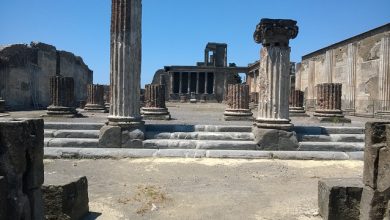In the past, climate change happened in one region, now across the planet

Even in earlier times, there were long periods of very hot and very cold temperatures that alternated. But scientists have been studying it in two thousand years and are seeing differences between then and current climate change. Then they happened in a well-defined region, now climate change is happening worldwide.
Climate change was also there in the past, it is often said. Then, for example, reference is made to the Little Ice Age or the period of medieval warming. In that regard, the current climate change would be a natural phenomenon and has nothing alarming.
But the Raphael Neukom team from the University of Bern now point to an important difference in an article in the journal ‘Nature’. In contrast to now, those climate changes have never happened on the entire planet at the same time in the last two thousand years.
Tree rings
The scientists use the so-called ‘Pages-2k Network’ for two thousand years. The temperatures can be read from the annual rings of trees because the thickness of the wood varies according to the prevailing temperatures. The same is possible with coral reefs, from which the temperatures of the water can be read. However, the researchers could not find an example of a climate change that occurred all over the globe at the same time, except for the last 150 years.
The researchers cite the Little Ice Age between the fifteenth and nineteenth centuries as an example. The cold waves occurred per region in other eras: in the fifteenth century in the central and eastern Pacific, in the seventeenth century in northwestern Europe and southeastern North America, and only in the other regions in the nineteenth century of the world.
“Consequence of human behavior”
“In contrast, we see that global warming has been happening at 98 percent of the Earth in the last 200 years,” the researchers write. “This indicates that climate change is now a result of human behavior and that it is unprecedented. And then it’s not just about absolute temperatures, but also about the spatial context in which that happens.”
Geography professor Scott George of the University of Minnesota points out in a commentary in ‘Nature’ that it is not easy to compare warm and cold periods. After all, a slow climate change that extends over several centuries is very difficult to read from the annual rings of trees. But he concludes that the climate is constantly changing. “No single warming produces such a clear picture in terms of the number of degrees as that of the last century. And on top of that, global warming is synchronized across the planet today.”




